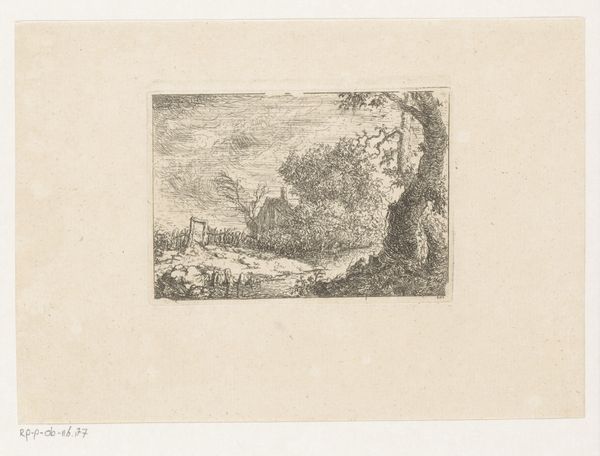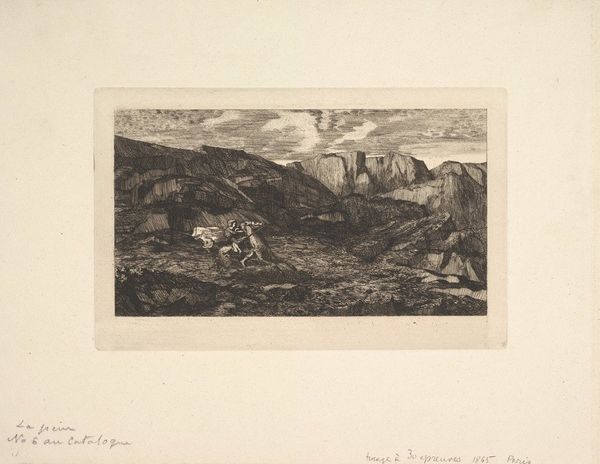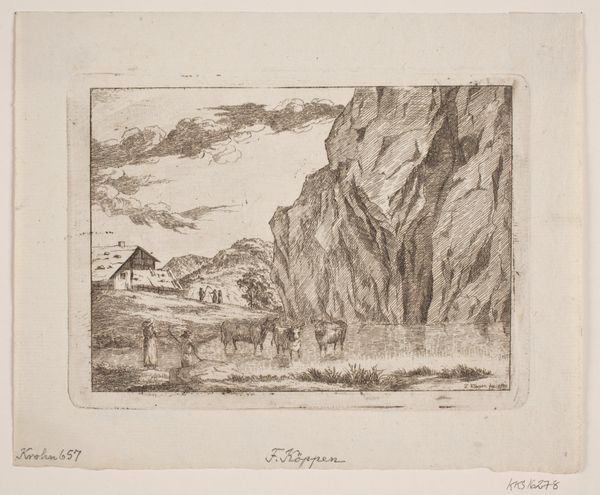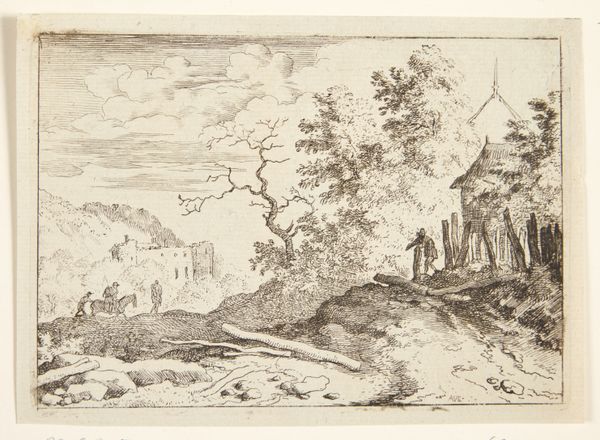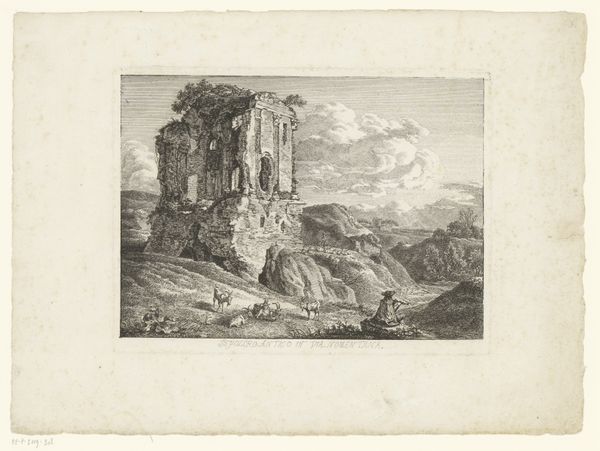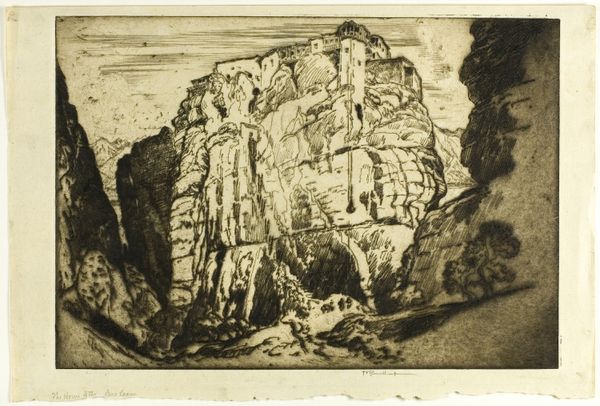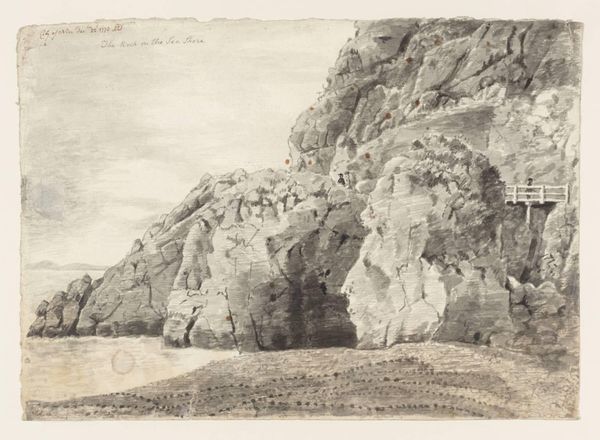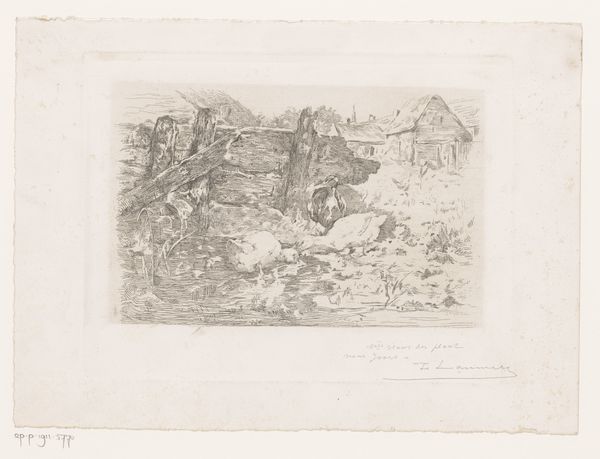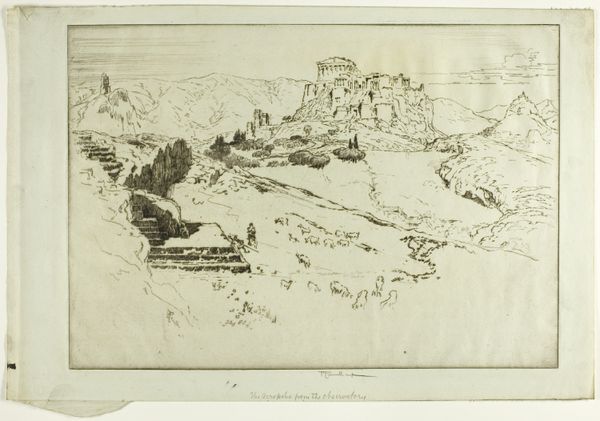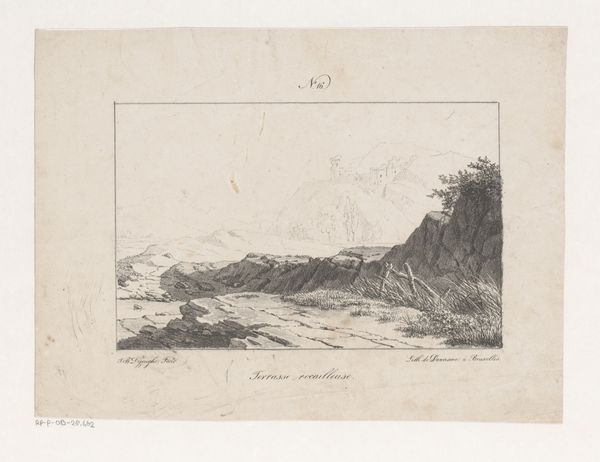
print, etching
# print
#
etching
#
landscape
#
etching
#
romanticism
#
line
Dimensions: 118 mm (height) x 135 mm (width) (bladmaal)
This landscape was etched by Friedrich Kaup in the late 18th century, using fine lines to create texture and depth. The composition immediately strikes us with its dramatic contrast between the imposing natural forms and the delicate human presence. Kaup masterfully uses line to delineate the rugged texture of the mountain and the rough-hewn structures of the village below. Look closely at how the etched lines create areas of light and shadow, giving volume to the mountain and suggesting the play of light on the landscape. This technique not only defines form but also evokes a sense of awe and perhaps even a touch of Romantic sublime. Consider the semiotic interplay between nature and culture here. The village nestles almost precariously at the foot of the mountain, a visual metaphor for humanity's place within the larger, often overwhelming, natural world. The stark verticality of the mountain is echoed in the church spire, a visual rhyme that subtly connects the earthly with the divine. Notice how the formal structure of the artwork allows it to function as a site where viewers can project their own understanding of nature. The artwork destabilizes the fixed meaning of nature, becoming a space for ongoing interpretation.
Comments
No comments
Be the first to comment and join the conversation on the ultimate creative platform.

